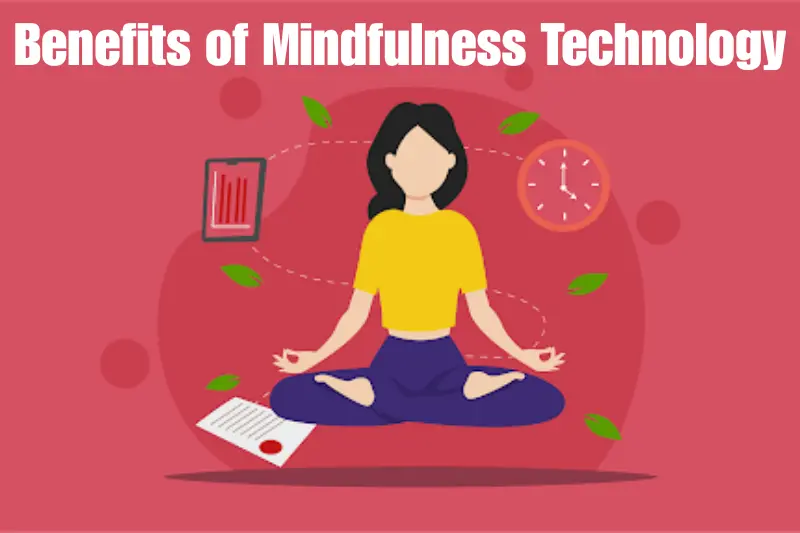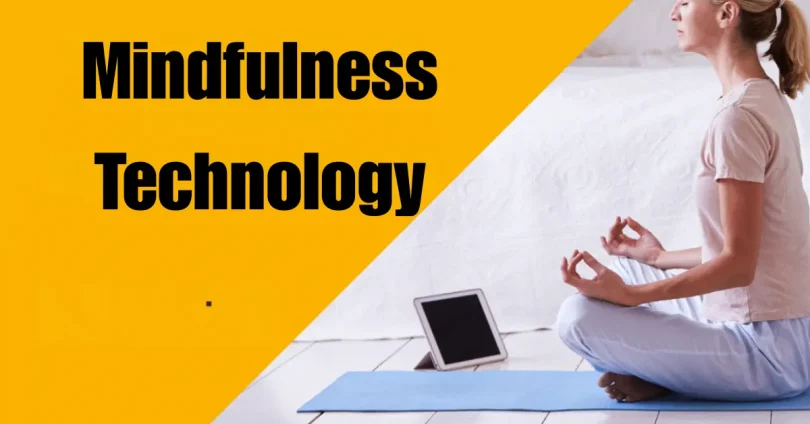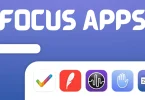In today’s fast-paced, often overwhelming world, the need for mindfulness practices has never been more apparent. With mounting stress, distractions, and mental health challenges, mindfulness has emerged as a key method for reducing stress, improving focus, enhancing emotional regulation, and fostering overall well-being. While traditional mindfulness practices such as meditation, deep breathing, and body awareness have been practiced for centuries, the integration of technology has allowed mindfulness to transcend beyond physical boundaries, making it more accessible and personalized.
This article delves into the concept of mindfulness technology, covering its definition, types, benefits, tools, and how it can enhance our daily lives.
What is Mindfulness Technology?

Mindfulness technology refers to the digital tools, apps, devices, and platforms designed to assist individuals in practicing mindfulness. These tools combine psychological principles, neuroscience, and traditional mindfulness techniques to help promote mental clarity, emotional regulation, focus, and overall well-being. At its core, mindfulness technology aims to make mindfulness practices easier, more engaging, and accessible for people in the modern age.
These technologies often incorporate biofeedback, gamification, and AI-driven personalization, which together offer a tailored and immersive experience. While some tools are designed for individual use, others are intended to foster organizational well-being, particularly in workplace settings, where employee stress and burnout have become common concerns.
You may also like to read this:
Powerful Strength And Performance Tools For Success
Body Optimization Tech For Better Health In 2025
Best Focus Apps For Better Time Management In 2025
Powerful Productivity Tech To Enhance Efficiency In 2025
14 Best Mental Clarity Tools To Boost Focus & Productivity
2025’s Best Brain Health Gadgets For Productivity & Focus
Types of Mindfulness Technology
A wide array of mindfulness technology tools are currently available, each designed to cater to different needs and preferences. These tools range from simple apps and wearables to more advanced biofeedback and virtual reality systems. Here’s a breakdown of the most common types of mindfulness technology:
1. Mindfulness Apps
Mindfulness apps are among the most popular tools for integrating mindfulness into daily life. These apps typically provide guided meditations, breathing exercises, relaxation techniques, and tools for tracking progress. Many mindfulness apps are free to download, though premium features may require a subscription.
Popular Mindfulness Apps:
- Headspace: A user-friendly app that provides guided meditation sessions tailored for various needs, including stress reduction, sleep improvement, and focus enhancement. It is ideal for beginners and experienced practitioners alike.
- Calm: This app offers a variety of features, including guided meditations, soothing sleep stories, relaxing soundscapes, and breathing exercises. It is particularly known for its focus on improving sleep and relaxation.
- Insight Timer: A free app offering over 100,000 guided meditations, a customizable timer for silent meditation, and ambient soundscapes. It’s perfect for individuals who prefer customizing their meditation sessions.
- 10% Happier: Geared toward those who want to develop practical mindfulness habits, 10% Happier offers courses on emotional intelligence, stress management, and mindfulness techniques to improve focus and well-being.
Most mindfulness apps include features such as progress tracking, reminder notifications, and integration with wearables to help users maintain consistency.
2. Wearable Devices
Wearable mindfulness devices have gained immense popularity as tools for tracking mental health, mindfulness, and stress levels. These devices use sensors to monitor physiological responses, such as heart rate variability (HRV), which indicate the body’s stress and relaxation levels. Wearables provide users with real-time data, allowing them to adjust their physical and mental states in response to stress.
Popular Wearable Mindfulness Devices:
- Muse Headband: This brain-sensing headband uses EEG sensors to monitor brain activity and provide real-time feedback during meditation. It offers auditory cues to guide users through mindfulness practices.
- Spire Stone: A small wearable device that tracks breathing patterns and provides real-time feedback to help users maintain mindful breathing. It also tracks stress levels and offers reminders to stay mindful.
- Oura Ring: Primarily a fitness and sleep tracker, the Oura Ring monitors heart rate variability and sleep quality, both of which are integral to mindfulness and mental well-being.
Wearable mindfulness tools give users immediate insight into their physical and mental states, enabling them to make mindful adjustments throughout the day.
3. Biofeedback Tools
Biofeedback technology helps individuals monitor and control physiological functions, such as heart rate, skin temperature, and brain activity. By providing real-time data, biofeedback enables users to develop a heightened awareness of their body’s response to stress and use mindfulness techniques to regulate those responses.
Popular Biofeedback Tools:
- HeartMath: A biofeedback tool that focuses on heart rate variability (HRV), teaching users techniques to balance their nervous system. The device provides visual feedback showing how changes in heart rate impact emotional and physical states.
- Wild Divine: Wild Divine offers biofeedback devices that measure physiological responses such as heart rate, skin conductivity, and muscle tension. It uses interactive games and meditation sessions to reduce stress and improve mental focus.
Biofeedback devices are often used in clinical or wellness settings but are also available for personal use. They offer a tailored mindfulness experience by providing continuous, real-time feedback.
4. Virtual Reality (VR) for Mindfulness
Virtual reality is an emerging technology with great potential for mindfulness practices. VR immerses users in calming, digitally simulated environments, allowing them to practice mindfulness techniques such as guided meditation, breathing exercises, or mindful movement (e.g., yoga and tai chi) in a more engaging and immersive way.
Popular VR Mindfulness Apps:
- TRIPP: This VR app offers a meditation experience that immerses users in visually stunning, calming environments. These virtual spaces are designed to promote relaxation, focus, and overall mindfulness.
- CalmVR: An extension of the Calm app, CalmVR offers nature-inspired virtual environments for guided meditation and relaxation. The app aims to provide a fully immersive mindfulness experience.
- Oculus Meditation Apps: Oculus VR headsets support multiple mindfulness apps that offer guided meditation in calming virtual environments. These apps combine relaxation techniques with immersive visuals and sounds to deepen the meditation experience.
VR mindfulness tools are ideal for those seeking an enhanced, more immersive mindfulness experience that can deepen their sense of presence and relaxation.
5. AI and Personalized Mindfulness Tools
AI-powered mindfulness tools are designed to personalize the mindfulness experience based on individual needs, moods, and behaviors. These tools use machine learning algorithms to analyze user inputs, preferences, and progress to create tailored mindfulness programs. AI tools can adapt to users’ emotional states, making them more accessible and effective in promoting mental well-being.
Examples of AI Mindfulness Tools:
- Replika: An AI chatbot that helps users with emotional well-being. It provides a safe, non-judgmental space to talk and practice mindfulness exercises based on the user’s emotional needs.
- Woebot: An AI-driven therapy chatbot offering cognitive-behavioral therapy (CBT) techniques and mindfulness exercises to improve emotional regulation, stress management, and overall mental health.
AI tools enhance the mindfulness experience by making it adaptive and responsive to users’ needs, helping them stay on track with their mindfulness journey.
Benefits of Mindfulness Technology

The integration of mindfulness practices with modern technology offers a host of benefits that make it easier for individuals to engage in mindfulness regularly. Some of the key benefits include:
- Accessibility: Mindfulness technology makes it easy to practice mindfulness anytime, anywhere. Whether you’re at home, at work, or on the go, digital tools provide on-demand access to mindfulness resources.
- Personalization: AI-driven and biofeedback tools allow for personalized mindfulness experiences based on individual needs and progress, making the practice more effective and engaging.
- Stress Reduction: Mindfulness technologies are effective in reducing stress. Techniques such as meditation, controlled breathing, and biofeedback training help individuals regulate their physiological responses to stress and anxiety.
- Improved Mental Clarity and Focus: Regular mindfulness practice using these technologies can enhance mental clarity, focus, and cognitive function, leading to improved productivity, decision-making, and emotional regulation.
- Convenience and Integration: Many mindfulness tools integrate seamlessly with other aspects of health, such as fitness tracking and sleep monitoring, promoting a holistic approach to well-being.
How to Get Started with Mindfulness Technology
To incorporate mindfulness technology into your routine, follow these simple steps:
- Identify Your Goals: Determine what you hope to achieve with mindfulness technology. Whether it’s stress relief, better sleep, or improved emotional regulation, knowing your goals will help you choose the right tools.
- Choose the Right Tools: Explore various apps, wearables, and VR experiences to find the ones that align with your preferences and needs.
- Start Small: Begin with short, manageable sessions (5-10 minutes) and gradually increase the duration as you become more comfortable with the practices.
- Be Consistent: Mindfulness is most effective when practiced regularly. Set reminders or integrate mindfulness practices into your daily routine to build consistency.
- Track Your Progress: Many mindfulness tools come with progress tracking features. Use these to monitor improvements and adjust your practice as needed.
Conclusion
Mindfulness technology has transformed the way people integrate mindfulness into their daily lives, offering a range of tools and resources to help individuals practice mindfulness anywhere and anytime. Whether you’re using apps, wearables, biofeedback devices, VR, or AI-driven tools, these technologies can enhance your mindfulness practice, reduce stress, and improve overall well-being.
By embracing mindfulness technology, individuals can foster a more balanced, focused, and mindful lifestyle, leading to long-term mental health benefits.
FAQs
Q1. What is mindfulness technology?
Mindfulness technology refers to digital tools and devices designed to help individuals practice mindfulness, combining techniques like meditation, biofeedback, and AI to improve focus, reduce stress, and enhance well-being.
Q2. How does mindfulness technology work?
It provides guided exercises, tracks progress, and offers real-time feedback to promote mindfulness. Some tools, like wearables, monitor physiological responses (e.g., heart rate) to guide users in regulating stress.
Q3. What are the benefits of using mindfulness technology?
Benefits include stress reduction, improved focus, accessibility, personalized experiences, and integration with other wellness tools like fitness trackers.
Q4. What types of mindfulness technology are available?
Key types include:
Mindfulness apps: Offer guided meditation and tracking.
Wearables: Track stress and mental states.
Biofeedback tools: Provide real-time physiological data.
VR apps: Offer immersive meditation experiences.
AI tools: Personalize mindfulness practices.
Q5. Can mindfulness technology help with mental health?
Yes, it can help manage stress, anxiety, and other mental health challenges by promoting relaxation and emotional regulation.



